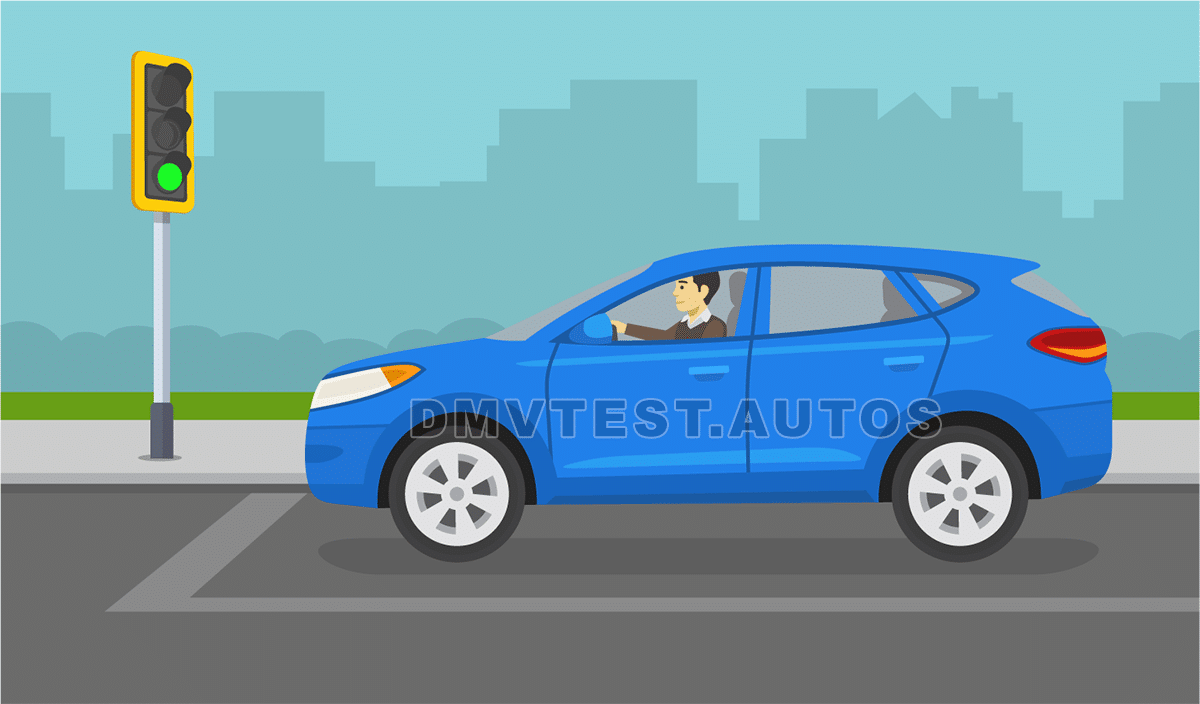Anticipating When To Stop : Judging When The Green Light May Change
There is no question that, as a driver, we have so many decisions we must make each day on the road. Sometimes it can seem overwhelming just to keep our vehicle going in a straight line without causing problems for ourselves or other road users. We have to look out for other road users and follow the rules of the road – often at the same time. This is especially true when deciding to stop or go when the green light changes to yellow.

Many drivers were taught by a family member or even a professional instructor how to judge when the light may change from green to yellow to know when to stop for the yellow light or continue through the intersection. They have learned to anticipate and be ready for it and sometimes even act early. Some advice drivers receive seems to have worked, yet others seem to put the driver at risk of a collision or a close call with other road users. It’s time to put the myths to bed and learn the facts to help you make safe decisions while approaching traffic lights.
Should I Slow Down in Advance
Many drivers try to anticipate when the green light may change to yellow and begin slowing down in advance. However, slowing down while it’s still green may lead to confusion for others, including the driver, but also for any driver approaching in the opposite direction who may want to turn left in front of them. The act of slowing down may give the impression you are about to make a turn, which leaves the door open for someone to turn directly in front of you or make a right turn from the intersection into the same lane as you. There is a safer way to prepare yourself for the green light if it changes to yellow.
Looking Well Ahead
Here is how you begin. As you drive along the road, keep looking well ahead of your current position. A minimum of a couple of blocks is a good start. If you notice a traffic light ahead of you is green, there is a good chance the light may change to yellow before you get to the intersection. This is when you should begin to decide if you will need to adjust speed and slow down. But there’s more to it than that. Some drivers have been advised about using the crosswalk lights to tell you the green light will change. Well, yes, it will change, but it does not tell you when it will change. Using the crosswalk hands or even the countdown lights as an indicator will not help you as much as you may think it does. Remember, the crosswalk is designed to help pedestrians cross the road safely. Not drivers. That’s why they are called pedestrian crosswalk signals. There are other things you can do, though, to make good decisions.
Green Light Changes To Yellow
Being able to stop safely when the green light changes to yellow involves a few factors. The first factor, and maybe the most obvious factor to many people, is how fast you’re driving. We should all realize the faster we drive along the road, the longer it will take to stop the vehicle. This means taking a glance at your speedometer each time you are approaching the traffic-lighted intersection is an important step to ensure you’re aware of what your current speed is. The next step is to recognize the current road conditions to identify if the condition of the road is less than ideal. Understanding that wet roads can cause less traction for the tires to grip the road properly should never be ignored; wet roads can create less friction for the brake pads to grab adequately. These factors can affect how quickly you may stop when the green light changes.
Traffic Traveling Behind You
The last factor, and maybe the most overlooked factor has to do with the traffic traveling behind you. Noticing how close they are following behind you is important, but the vehicle size can seriously affect your ability to stop if the traffic lights change from green to yellow. This would include having a large truck or bus behind you. It may be more serious if the large truck or bus is also following you closely. If you brake quickly and hard for a yellow traffic light when a vehicle follows you too closely behind, it is a significant cause of a rear-end collision. One of the things to remember is that in any jurisdiction, the yellow light means to stop if it’s safe to do so. The speed you’re traveling, the conditions of the road, and the size and closeness of the traffic following behind you are all major factors in making this decision. But again, these decisions are best made when the light is still green before it changes to yellow.
Now that you know how to make a safe decision, it’s time to implement all of this. Once you’ve identified that you’re approaching a green light that has been green for a while or perhaps a green light that you are unsure when it turned green, check your speedometer mirror for traffic behind and notice the current road conditions. Tell yourself, “If the lights change to yellow now, I can stop.” Once you get to an imaginary point where you say, “If the lights were to change yellow, now I must go,” then do not attempt to stop if the light changes. Maintain your speed, but ensure the intersection is still clear. If it is, keep going.
Making early choices when approaching a green traffic light is an important part of driving for every driver. Speeding up or slowing down because you see the light change to yellow never really works unless your goal is to get a traffic ticket or develop bad habits.
